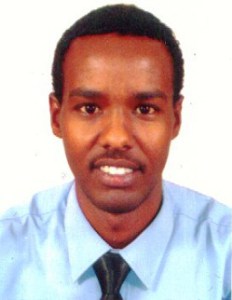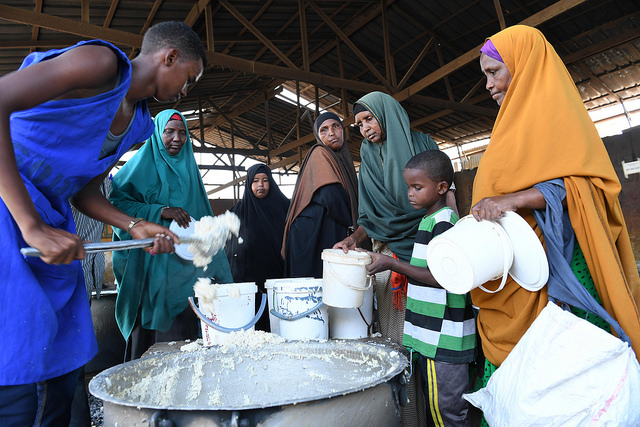The desperate survival of local NGOs in Somalia


By Mohamed Yarrow
They are often times referred to as Local Non-Governmental Organizations or National Non-Governmental Organizations. These are the indigenous and homegrown organizations formed and operate within a country, however, few extend their operations beyond the boundaries of their countries to neighboring countries.
In Somalia, most of these local organizations sprung up immediately after the civil war in 1991 in response to the emergency humanitarian needs and the need to fill the gaps in basic service provision. Ever since these NGOs’ contributions have been felt across the country. Together with their international counterparts, they try to fill in the vacuum created by the absence of government in respect to provision of basic lifesaving goods and services such as food, water, health, education and nutritional support to malnourished children, pregnant/lactating mothers and other vulnerable groups like the elderly. It is during humanitarian emergencies brought by conflicts and perennial droughts that their aid delivery response role is highly felt and they become an invaluable asset in the humanitarian response structure.
SURVIVAL MODE
From the external public view, many think that these local NGOs and their executives are having it easy and swim in swamps of funds, opportunities, abundance and comfort. However, this popular belief of their easy life and the reality in which these organizations operate in, are as different as a chalk is to a cheese. A microscopic analysis of their operational world will reveal to you that, in fact they are on a survival mode and desperately struggle to make ends meet. Why am I saying this? Please allow me to take you through the myriad of challenges they face just to remain afloat.
In Somalia almost all the local organizations act as implementers for international organizations and UN bodies. In this article, I’ll use the term international agencies to refer to both the UN bodies and the other international organizations. In most cases the international agencies engage the local NGOs as mere sub-contractors or vendors- meaning they don’t even qualify to be partners.
They don’t get direct funding from donors, save for few who get from UN’s country pool funding. Simply put, they implement programs on behalf of the international agencies. Because of this chain, they end up getting meagre operational budgets to undertake programs, finding it difficult to meet basic running costs such as salaries for support personnel, office rent, car hire, utilities etc.
This is despite the fact that they bear all the risks of implementing the programs on behalf of the international ones amidst the numerous security and accessibility challenges in the country. Negotiations with the international agencies to jerk up the operational budgets often end up in futility. Same encounter with the second, third, fourth international agency- bound by un-written rules, sort of – and executives of the local NGOs leave the negotiation tables with their heads down; disturbed by the thoughts of how to sustain the organizations in the next 1,2 or 3 months.
REPUTATIONAL RISKS
These organizations have got only today, and not tomorrow. If any, their tomorrow is bleak, freak and full of uncertainties. It is like taking a step into the night not knowing what the darkness holds for you. This is compounded by delayed project funds by the international agencies which compels local organizations to pre-finance project activities and receive a reimbursement after a wait that can take years- yes, I mean years! Don’t forget, delayed funds mean delayed salaries for staff and reputational risks! They normally commit local traders to undertake the unfinanced activities with a pledge of late payments which is mostly indefinite. And this reinforces the reputational risks confronting them.
For a minute, let us just imagine the morale of personnel working in these broke, debt-ridden local organizations with uncertain future; staff that experience rampant salary delays (delays of up to even 6 months!), have no medical insurance, no life insurance, no gratuity/pension schemes, no festive bonuses (like Eid & end year) and no any support scheme. A staff working with a local organization lacking all the above rights and benefits probably has a former university classmate/friend working with an international agency in the next office block who enjoys all of the above benefits including a timely-paid salary of a greater scale.
Needless to mention that these two employees hold similar job portfolios, but the former works in more insecure environment as the later rarely leaves the comfort of his/her office except on a short field visit. Their difference: the employer. This explains the high turnover of staff among local organizations as they look for the slightest opportunities to land a job at the international ones. Fresh university graduates who would not have gotten jobs at international agencies, first join the local ones, get trained and get the requisite experience before they transit to the international ones.
MASSIVE BRAIN-DRAIN
The situation has a resemblance to the small League Two football clubs who first identify, nurture, train and mentor young players who in the end join the preying big League One clubs. So, every staff at local organizations has got a burning ambition of working for an international agency and that is seen at the ultimate price. Trying convince these staff to stay at the local organization when they receive job offer letters from the international ones is a nightmare- it is like cuddling a baby on the lab of the vaccinator nurse! Suffice to say that this massive, unmanageable brain drain and the acute financial constraints has a direct negative bearing on the institutional capacity of the local organizations in the country.
I trust by now you know the root causes of the capacity problems you often hear the local organizations are grappling with. They are constantly challenged to improve their capacities and systems without understanding their ability to do so. Because of this, they are mostly ranked as high-risk entities that are not accountable enough in the management of donor funds. These fears warrant numerous capacity assessments by the international agencies before engaging with them. In a year, a local organization can be capacity-assessed more than eight times by either the same international agency or different agencies. Such exercises are not only tedious and repetitive but also have submissive undertones as they are informed by the theory of blanket condemnation and labelling of these organizations as unaccountable.
BLACKLISTED
Under this accountability guise, there are some cases where investigators working on the behest of some international agencies have raided the premises of local organizations, forcefully confiscating their working documents, data and equipment. In the end, you hear these organizations have been found culpable of fraud and therefore BLACKLISTED. This term may be new to some, it can be loosely defined as isolation and imposing funding sanctions against a local NGO deemed to be culpable of fraud. The report on and names of the blacklisted organizations are widely circulated in the donor system to deter any more funding to them. Once shamed, isolated and denied funds, these organizations die a slow and painful death.
An entity that was painfully constructed for many years and carried the dreams and aspirations of many, just crumbles in a matter of days right in front of their very eyes. What is more painful in this, is that some of them are victimized on mere suspicions and allegations and aren’t given any chance to defend themselves against those allegations, and can’t find any arbitration platforms in place. They remain guilty as raided (charged).
Being programme implementers for their international counterparts means that these local actors are in the field and directly undertake programs to support the communities. They relay information and data in the form of reports to the international ones for onward submission to the donors. In most cases these local organizations and their implementing role is neither mentioned in the final reports to the donor nor do they appear in the websites of the international agencies whom they do the implementation on their behalf. They are denied the appreciation and visibility they deserve as the implementers for those particular projects. The international ones take all the credit for the work done.
In emergency situations, the local NGOs are credited for being the first responders since they live within the affected communities and are attuned to the local happenings. Their localized setup makes them custodians of invaluable local knowledge that if put into good use, can extensively contribute to the effectiveness of humanitarian and community development programmes. They have the potential of coming up with innovative and impactful programmes.
Unfortunately, a good number of international agencies overlook the local organizations’ potential and design programmes without consulting them and their inputs. It is a standard practice and a requirement that programmes should be community-driven, use bottom-up approach where the locals play a vital role in the entire programme cycle. Contrary to this, many local organizations find themselves as passive implementers of externally-designed programmes that the beneficiary community have never been consulted on their formulation. Thus, forced to address any implementation challenges that arose as a result of mismatches between the real community needs and what is provided in the externally-designed programme.
ANY WAY OUT?
In a nutshell, all these challenges I mentioned above are what make local organizations “local” organizations. Do you get that? Challenges that are enough to stymie any capacity growth and realization of all the beautiful visions that the founders of these organizations have. Liquidation fears is the bane of the local NGOs’ life in Somalia today, and it is to the courtesy of the headstrong of their executives that many of them have survived so far.
So, how long will these organizations be in this perpetual survival uncertainties? Are there shake-ups in the international aid structure that can turn the tides for organizations in the global south, including the local NGOs in Somalia? Are there measures that these local organization can take by themselves to counter current existential threats that portend doom for them and the good work that they do for communities all across the country?
Catch up with my next article on this same blog, as I give you answers to all of the above questions and demonstrate why there is finally a light at the end of the tunnel for the local organizations.
Mohamed Yarrow is the Executive Director, Centre for Peace and Democracy (CPD-Africa). The views expressed in this article are his own and do not necessary represent those of CPD-Africa. He tweets @MohammedYarrow